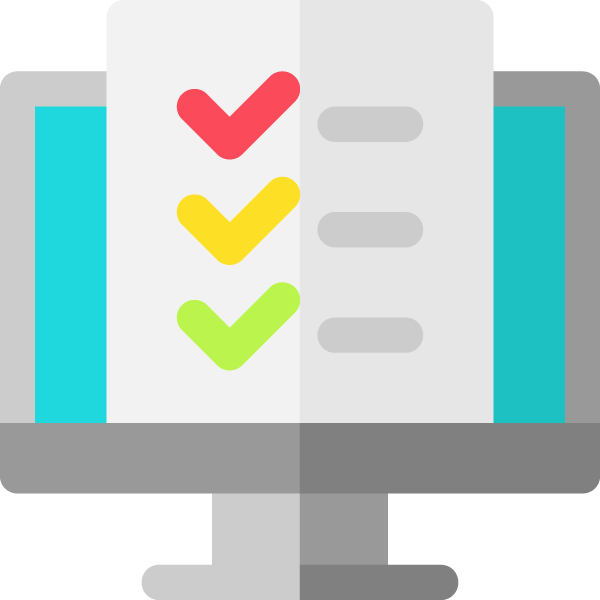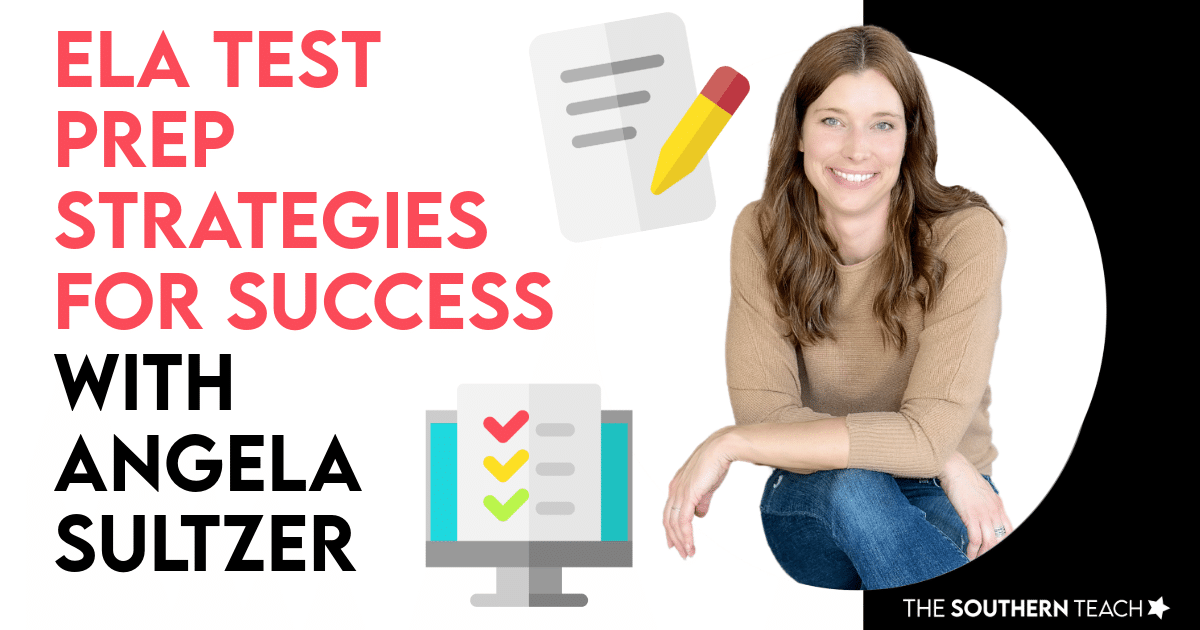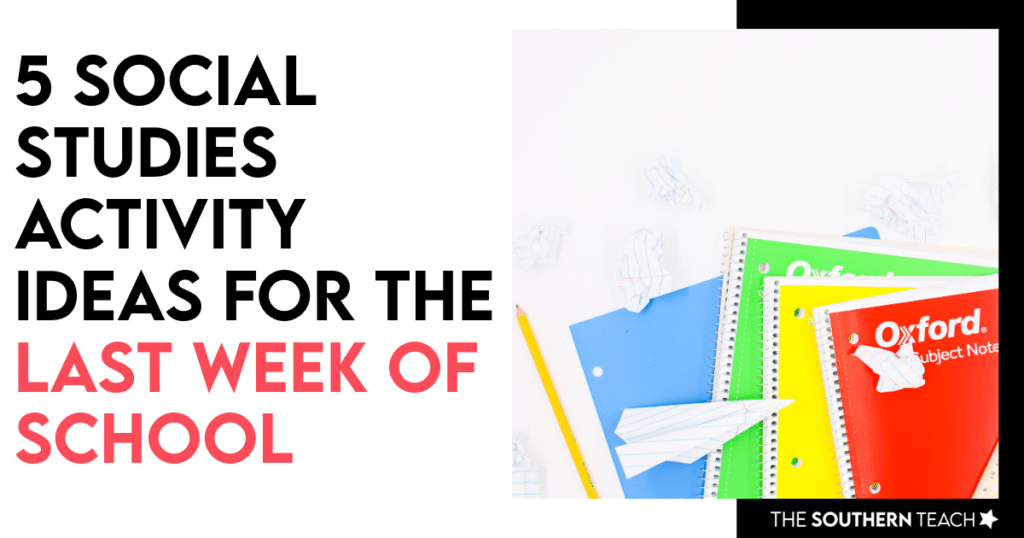Share This Post:
High-stakes testing can feel overwhelming for both students and teachers. This single test significantly impacts school report cards, evaluation procedures, and data-driven conversations. You can help your students feel confident and prepared with the right strategies. So, let’s work together to make sure ELA test prep builds success with the help of Angela S. from Custom Classroom by Angela!
Who is Custom Classroom by Angela?
Angela has a strong background in both classroom teaching and test prep intervention. She has taught second, fourth, and sixth grades, but most of her experience has been in intervention, working with students who struggled to pass standardized tests. Over the past ten years, she has created test prep materials tailored for various states, including Texas, Florida, and California. Her expertise lies in breaking down high-stakes test preparation into manageable, stress-free strategies, helping students and teachers navigate the process.
Smarter Than the Test: ELA Test Prep Strategies for Upper Elementary
Angela is an expert in making sure ELA test prep builds success without putting unnecessary stress on students and teachers. I was excited and thankful for the opportunity to sit and discuss the best ways to prepare for upcoming assessments for upper elementary! You can watch the entire conversation on Youtube!
What do you think is the toughest part of getting students ready for high-stakes ELA tests?
One of the biggest challenges is helping students get comfortable with the test format. Many upper elementary students are brand new to standardized testing, and test-taking is a skill in itself. High-stakes tests often look completely different from regular classroom assignments, and the structure can be unfamiliar.
The first step is making sure students feel comfortable with the online testing platform. Many states have moved to digital tests, meaning students must practice using online tools like drag-and-drop features, rulers, and interactive components. Without this exposure, the test itself can feel overwhelming, regardless of content knowledge.
The second challenge is ensuring that students are familiar with the way test questions are phrased. Many test questions use complex or unnatural wording, requiring students to analyze multiple-choice options differently than they’re used to in daily lessons. Repeated exposure to these question types helps build confidence and reduce stress.
What are some simple but effective ways teachers can help students understand the test structure during ELA test prep?
Consistently exposing students to the test format is key. One of the best ways to do this is by incorporating test-style questions into daily warm-ups. By making it a regular part of instruction, students become familiar with the types of questions they’ll encounter.
Another strategy is to have students practice using the same digital tools they’ll use on the test. If your state’s test is online, have students practice writing responses in a Google Doc rather than on paper. Show them how to use online highlighters, answer drag-and-drop questions, and navigate different testing features so they aren’t caught off guard on test day.
Standardized tests love throwing in tricky vocabulary. What are some easy ways teachers can help students break down and understand those tough words?
Understanding test vocabulary is just as important as understanding the content. There are two types of vocabulary students need to know: content vocabulary (terms related to ELA concepts) and test-taking vocabulary (words like “characteristics” and “associated” that frequently appear in test questions).
One effective strategy is color-coding test questions. Highlight content-specific words in one color and tricky test language in another. Discuss these words as a class and have students explain what they think they mean. Creating a classroom test vocabulary word wall can also reinforce these words in daily instruction.
You talk about teaching students how to “be smarter than the test.” Can you share some of your best test-taking strategies—like how to eliminate wrong answers or make smart guesses?
One way to make test prep engaging is to turn it into a competition. Encourage students to “outsmart” the test by recognizing common answer patterns. Multiple-choice tests often have one obviously incorrect answer, one nearly correct answer, and one answer that is meant to trick them. Teaching students to identify and eliminate wrong answers increases their chances of selecting the right one.
A fun way to reinforce this strategy is by having students create their own test questions. They can write a question, a correct answer, a nearly correct answer, and two incorrect choices. Then, classmates can try to solve them, sparking discussions about what makes an answer correct or incorrect.
There’s always that pressure to “teach to the test,” but we also want to keep learning fun and engaging. What are some ways teachers can prep students without making it feel overwhelming?
ELA test prep doesn’t have to mean endless worksheets. Instead, integrate test-style questions into engaging activities like:
- Games – Use task cards with board games or review competitions.
- Stations – Create small groups where students rotate through different question types.
- Mystery Pictures – Let students solve test-style questions to reveal an image.
- Interactive PowerPoints – Make test prep visual and engaging with interactive slides.
Making test prep feel like a natural part of instruction rather than a stressful, last-minute push helps reduce anxiety and improve retention.
For a teacher who’s just starting to put together a solid ELA test prep plan, where’s the best place to start?
The best place to start is by taking the test yourself. This gives you firsthand experience with the format, vocabulary, and potential pitfalls students might face. Once you understand the test structure, create a strategic four-week review plan leading up to test day.
A great approach is to break test prep into weekly focus areas:
- Week 1: Vocabulary and comprehension strategies
- Week 2: Question types and answer elimination strategies
- Week 3: Writing responses and constructed answers
- Week 4: Review and confidence-building games
Collaborating with other teachers can also help divide responsibilities and ensure all students get targeted support in their areas of need. Angela’s Four-Week Test Prep Plan provides structured guidance on how to approach test prep effectively.
Do you have any must-have resources that make a big difference in preparing students for the test?
Daily warm-ups are one of the simplest and most effective ways to incorporate ELA test prep into a routine. Practicing small test-style questions daily makes students more comfortable with the format and question types without feeling overwhelmed.
Other essential resources include:
- Test-style question sets to expose students to different question types.
- Game-based review activities to keep engagement high.
- Mock tests to help students practice time management and endurance.
- Join Angela’s email list and you’ll receive FREE ELA Warm-Ups!
If you’re looking for additional test prep support, check out Angela’s Custom Classroom by Angela store on TPT, where she provides ready-made test prep resources. You can also find helpful test prep strategies on her YouTube channel, where she shares free tips and step-by-step guidance for teachers. You can also check out her Facebook Page and Instagram for great strategies and tools.
ELA test prep doesn’t have to be stressful! With ELA test prep, it is essential to focus on a few key aspects. Introducing strategies early, regularly exposing students to test questions, and incorporating fun and engaging review activities help set your students up for success. These strategies are a fantastic way to build confidence in our test-takers.
What are your favorite ELA test prep strategies? Share them in the comments below!
kirsten hammond
Kirsten is a former 3rd and 5th grade teacher who loves helping upper elementary teachers by creating resources and sharing ideas that are engaging, research-based, and TEKS-aligned. She is a work-from-home mama of 3 rambunctious little ones and loves running, true crime, and lots of coffee.























